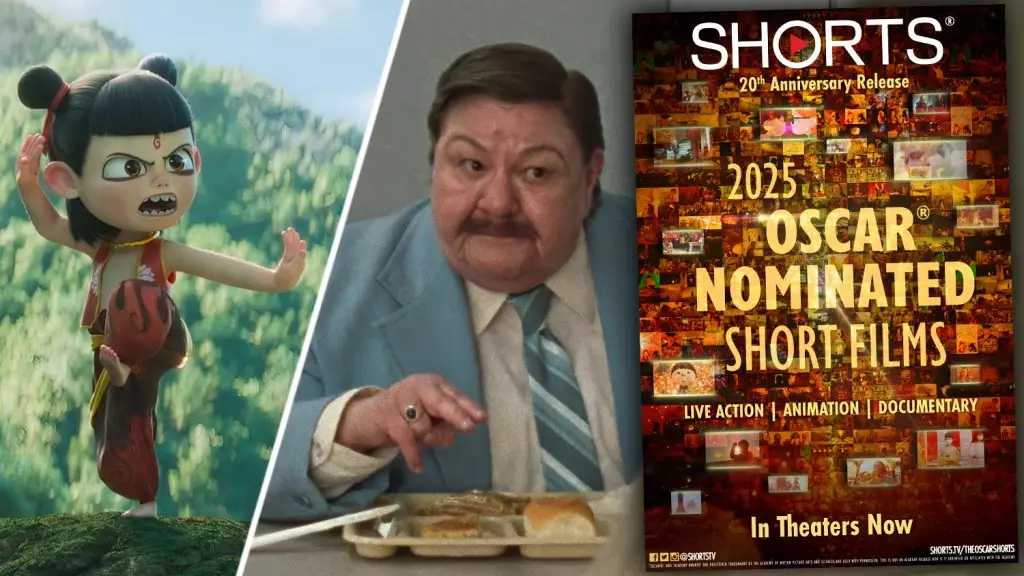The landscape of cinema is perpetually evolving, often propelled by unique narratives that capture the essence of our shared experiences. Among the latest contributions to this dynamic field is “Universal Language,” a feature film directed by the innovative Canadian filmmaker Matthew Rankin. Recently making its debut in select theaters in New York and Los Angeles, this Oscar-shortlisted piece stands as a testament to the rich interplay of cultural narratives in film today. At the same time, the relentless growth of animated features, exemplified by “Ne Zha 2,” underscores the increasing globalization of cinema. The return of Oscar-nominated shorts for their 20th season further exemplifies the celebration of diverse cinematic expressions that resonate worldwide.
Rankin’s “Universal Language” is not merely a film; it is a meticulously crafted experience that defies conventional categorization. Set against a magical realism backdrop that blends elements from Tehran to Winnipeg, the narrative is a patchwork of interwoven lives and cultural dialogues. The film follows characters like Negin and Nazgol, who stumble upon frozen currency, and Massoud, who guides tourists through the historical layers of Winnipeg. This rich tapestry of experiences invites viewers to reflect on the beauty and complexity of cultural intersections, encouraging a sense of empathy and shared humanity. As Rankin articulates, the film presents a much-needed catharsis amid a political climate steeped in division and contempt, echoing the sentiments of isolation many grapple with today.
What sets “Universal Language” apart is its exploration of cultural identity through a whimsical lens. The film employs Farsi dialogue, inviting audiences into an enchanting world where language transcends barriers. Such a decision not only serves as a bridge for understanding but also underscores the importance of representation in storytelling. This facet resonates profoundly in today’s polarized society, where cinema has the potential to promote inclusivity and dialogue. As Andrew Carlin, the theatrical distribution chief at Oscilloscope, aptly suggests, Rankin’s stylized approach encourages audiences not simply to watch, but to engage with a narrative experience that invokes curiosity and compassion.
With its impressive critical acclaim, “Universal Language” sets the stage for a slow but strategic rollout across the United States, which speaks volumes about the changing dynamics of film distribution. As Rankin optimistically observes, the communal experience of film viewing is regaining its allure, reflecting a broader societal craving for authentic connections in an era dominated by digital isolation. In a time where the consumption of media increasingly veers towards the solitary experience of screens, the sense of shared exploration and encounter offered in theaters represents a refreshing change.
Simultaneously, the success of “Ne Zha 2,” which has rapidly become a cultural phenomenon in China, emphasizes the global impact of animated films. As it prepares to open in over 700 theaters across North America, its success story speaks to the triumph of storytelling that resonates with both local and global audiences. The film, directed by Yang Yu, intertwines fantasy with cultural mythology, appealing to diverse viewers by drawing upon rich artifacts of Chinese heritage. As the film soars in box office performance, it positions itself as a formidable contender, joining the ranks of internationally acclaimed animated films.
This success is corroborated by its historical significance, marking “Ne Zha 2” as a prominent entry in the global cinematic landscape and setting new benchmarks for films hailing from China. The prominence of such animated features challenges preconceived notions about crossover appeals in filmmaking, showcasing that stories, irrespective of their geographic origins, have the ability to connect with audiences across varied cultural contexts.
In conjunction with these groundbreaking films, the return of Oscar-nominated shorts underlines the growing appetite for compact storytelling that offers both innovation and reflections on contemporary issues. With three distinct blocks featuring best live-action, animated, and documentary shorts, this annual event celebrates the artistry and diversity of cinematic creativity. The variety within these nominations allows viewers to explore unique narratives that might otherwise be overlooked in traditional feature films.
As each of these cinematic pieces contributes to a broader conversation, they encourage both audiences and filmmakers to embrace the wealth of narratives available to them. Whether in an intimate theater or a packed auditorium, the resurgence of collective film experiences echoes a shared desire for connection, reflection, and understanding. In this new chapter of filmmaking, the quest for nuanced storytelling and cultural representation seems poised to flourish, promising deeper engagements for audiences worldwide.
